
Museu Nacional do Azulejo
Sitting near the waterfront in Lisbon pondering where we should go next, I remembered our friends at The Travels of BBQBoy & Spanky had written a post about a tile museum in Lisbon – Museu Nacional do Azulejo – and I remembered a particular photo they had posted that captured my attention. Let’s go there!
Entering the first hall, of tiled wall murals, at the Museu Nacional do Azulejo, I think we both let out a silent gasp of wonder. Not only was the sheer size of the mural incredible, but the detail in each and every tile depicting the history and the Portuguese culture, all defined in blue and white, was extraordinary.
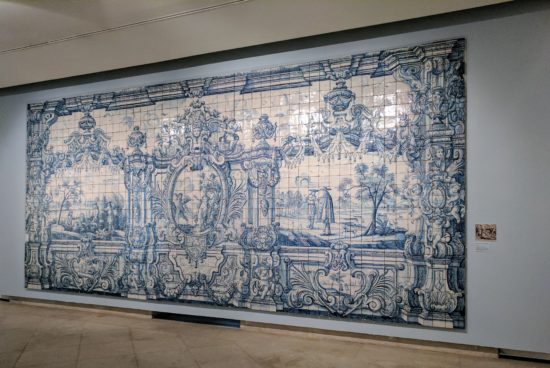
After meandering through a few exhibition rooms and being awestruck at the detailed beauty and history of the colorful tiles, we turned the corner and entered a room that just took our breath away. I looked at Abi and said, “What is this place?” It was truly stunning.
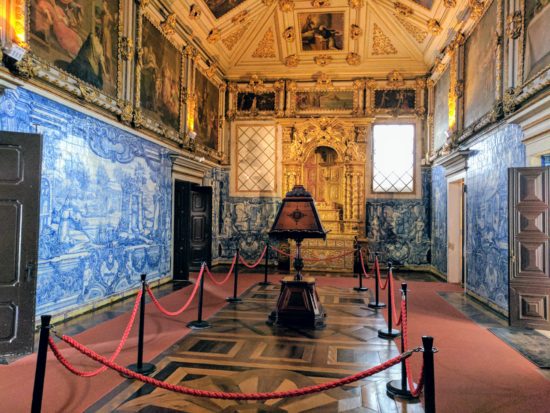
A 16th Century Convent
Lucky for us we struck up a conversation with a staff member, Luis, who was a wealth of knowledge and he was ready to share. As best I can remember the story goes a little like this. The museum is housed in a 16th century convent founded by Queen Leonor. The convent of Madre de Deus. It was somewhat common for the daughter of a noble family to enter the order, if they could not find a husband. Oh, if those walls could talk the stories they would weave!
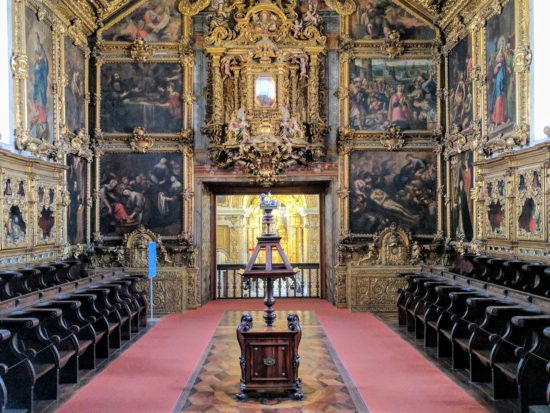
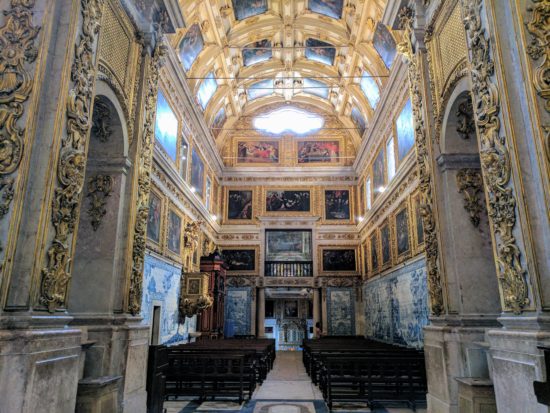
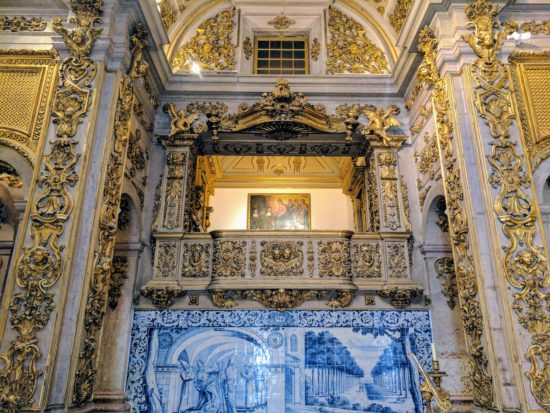
As you can see, this was no ordinary little church, attached to a convent, that just happened to be a part of the Queen’s household. This was truly an extraordinary place of worship and culture. But, back to the tile.
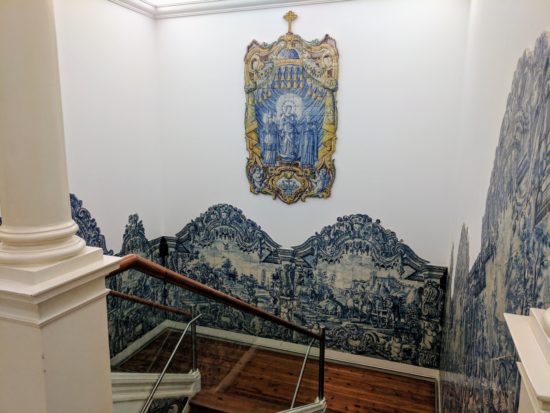
Vista Panoramica de Lisboa
On the third floor there is a panoramic tile mural that once again left us awestruck. It is 1115 x 2347cm (120′) and depicts the city of Lisbon as it was before the great earthquake of 1755. It’s known as The Great View of Lisbon, circa 1700 and it is spectacular in it’s detail.
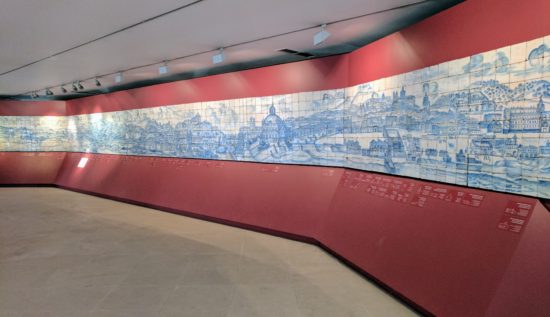
The Last Supper & The Missing Figure
Here’s a fun tidbit from the Museu Nacional do Azulejo. In the upstairs choir room there is a painting – a very large painting – of The Last Supper. Legend has it that it has been hanging in the choir for 500 years and if I remember correctly there is no artist’s signature. But, what’s fascinating is that you can clearly see where a figure has been “erased” for lack of a better word. Really something, right? Take a close look, and then do a Google search for da Vinci’s Last Supper and note the differences.
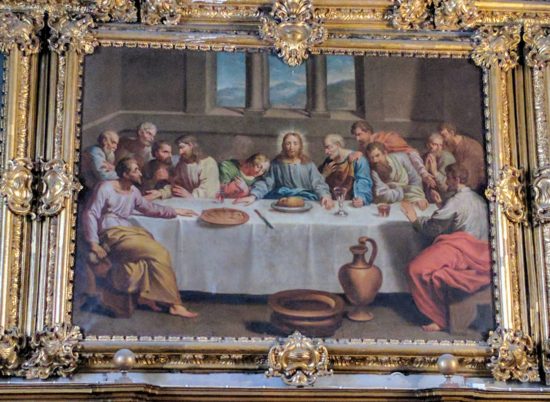
Museu Nacional dos Coches
There are two sites one must see when visiting Lisbon. The Museu Nacional do Azulejo should not be missed, obviously, and the second must see is the Museu Nacional dos Coches.
We had no idea of what to expect when we set off for the coaches museum. It was Luis from the tile museum who suggested we should see the coaches. At first we thought, um okay, why not? How many different coaches could there be? Ha! There were a lot and each and every one of them stood out from the next. The detail defied the imagination. And, it was interesting to see the changes in style and sophistication that took place over the generations. I especially found it interesting that one royal had coaches for his illegitimate children.
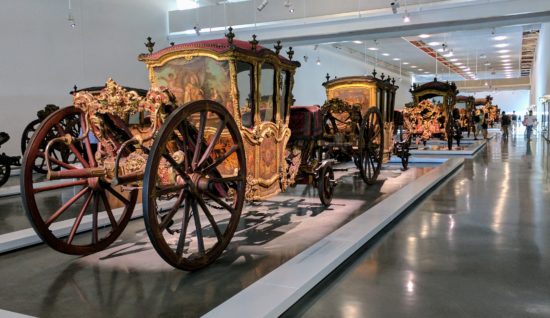
If you get to Lisbon for no other reason than to see these two museums, then you’d be good to go. Yes. They are in fact that good. It takes a bit of effort to get to both museums as they are on opposite ends of Lisbon but it is well-worth the time. You won’t regret it.
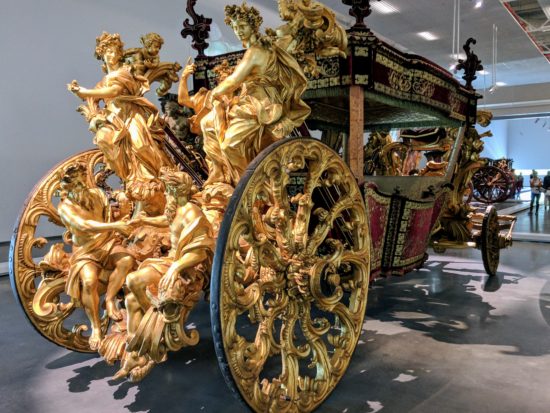
To see more photos from our visit to the Museu Nacional dos Coches, please see our Facebook page at: One Road at a Time.
To Read More:
- The Travels of BBQ Boy & Spanky: Photo Essay On Lisbon, Portugal
- No Particular Place to Go: Portugal’s Love of Tiles
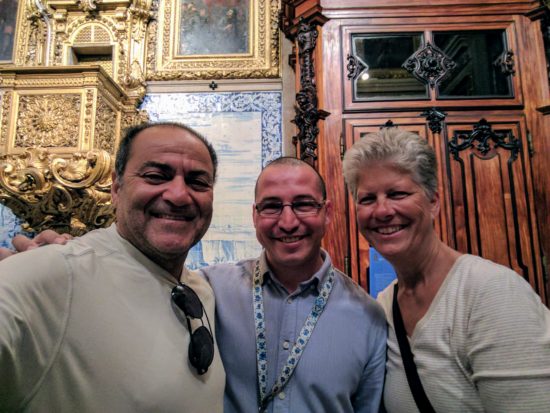
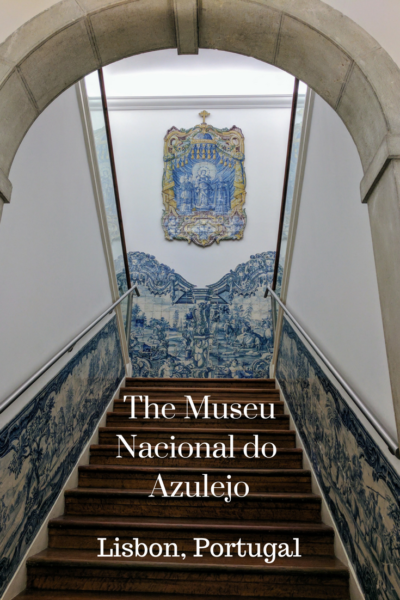





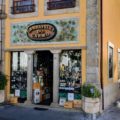







Hey! Thanks for the link Patti!
As you know we weren’t that fond of Lisbon – but 2 things really did stick out for us and one was the Tile museum. The other was the Jeronimos monastery.
Glad to hear you enjoyed it!
Frank (bbqboy)
Frank recently posted…The absolute worst thing about being a full time traveller (itâs got nothing to do with travel)
We made our way to the Jeronimos Monastery but it was a mob scene on that particular day. I think it was a Sunday and there may not have been admission that day, can’t remember. Anyway, it was late in the afternoon, considerable warm outside, and I didn’t feel inclined to stand in the hot sun for over an hour to get in the door. Maybe next time. The Monastery is somewhat near the coaches museum, which is why we were on that end of the city.
What a great post Patti and Abi. I just got done taking an art appreciation class and did quite a bit of research on da Vinci for an essay. Many artists tried to reproduce his works and the you tube video on the restoration of the painting is interesting. The photos you posted are amazing and so is the video. You could almost imagine being there. What an opportunity of a lifetime to get to enjoy visiting and exploring that much history. Thanks for sharing the story with all of us. Have fun and continue to bring us along with your travels and studies of the remarkable history of Europe.
Gail
Oh, that would be so interesting to take an art appreciation class and research the work of da Vinci. I found the story of the painting in the Lisbon Museum to be really intriguing. Thanks so much for sharing our journey, Gail.
We absolutely loved the Tile Museum in Lisbon. Definitely a favorite for us too, so it was great to revisit with you and see parts of it again.
The modern tiles with their geometric patterns were absolutely beautiful!
Peta
I think, Peta, that it’s one of those places that has to be seen to be believed and appreciated. Pictures definitely don’t do it justice!
Looks like you’re having a great time in Lisbon, what a cool museum and I love it when you find a great, knowledgable staff member! Looking forward to reading more about Lisbon 🙂

Amy recently posted…Our Everest Base Camp Trek Itinerary
Thanks, Amy. Lisbon was an interesting city. We only had 2 1/2 days to explore, but what we saw we liked. It’s definitely a large city and as such very busy. We were told the cruise ships arrive in Aug. Sept., and Oct. and I can only imagine how crazy the historic center gets. If you and Andrew make it to Lisbon, the two museums I wrote about are well-worth your time.
In my last day, I visited to this Museum and it was astonishing! I really liked it and if I have a chance to visit to Lisbon again someday , I must go there! and I met Luis who is very nice guy and he has huge knowledge about tiles. I really appreciate to him.
Hello Eunyoung, thanks for finding our site. We completely agree, the museum is astonishing and so great you got to meet Luis!
Love, love, love tiles. Wait until you see the train station in Porto.
We have seen the train station tiles in Porto, they are very special and I’m looking forward to seeing them again when we arrive in Porto, in the fall.
So glad you made it to the Museu Nacional do Azulejo The chapel is a true jaw-dropper and how lucky that you met up with Luis to learn some of the lesser known background about the museum. Loved your panoramic movie of the painted tiles of the great city of Lisbon before the 1755 earthquake. And what a mystery to ponder about the “Last Supper” painting. We totally missed that! Lastly, thanks for the recommend of the Museu Nacional dos Coches. That will be number one on our list for our next visit to Lisbon.

Anita @ No Particular Place To Go recently posted…Terezin: If A Picture Paints A Thousand Words
We would have never noticed anything out of the ordinary about The Last Supper painting had it not been for our conversation with Luis. And, he told us about the coaches museum, which was fascinating. Definitely plan to go the next time you’re in Lisbon. It’s in Belem.
Just. Wow. So gorgeous!
Yep, that’s the perfect reaction. Our photos didn’t do justice, and there are SO many murals and tiles at the museum, it is wonderful.
The culture of Europe is breathtaking – Such a treat to visit, soak up and enjoy 🙂

Linda recently posted…A Map of Mordor and a Map of Central Australia – Where’s the Connection?
WOW! Who knew a tile museum would be so spectacular.

Gaelyn recently posted…Cliff Spring trail, an intimate side canyon on the North Rim